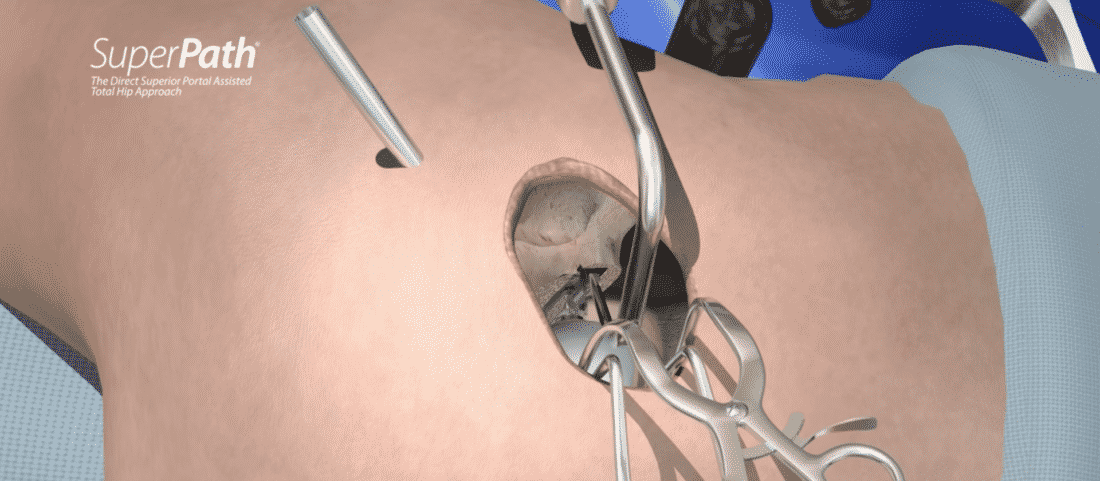More reliably provides a faster recovery. Less pain due to less tissue damage. Absolutely no restrictions after surgery. The hip is never…
- More reliably provides a faster recovery
- Less pain due to less tissue damage
- Absolutely no restrictions after surgery
- The hip is never placed in potentially unsafe, twisted positions
- Quicker hospital discharge (0-2 days)
- Rare nursing home or rehab center stays, even for the elderly patients
- More natural feeling hip
- SuperPATH Surgical Steps
The Surgical Process
The patient is laid on the side with the arthritic hip in the “up” position. A 3-5 inch incision is made above the tip of the bone you can feel on the side of the hip. The buttock muscles and tendons are spread apart without cutting any of them off of the hip bone which exposes the top of the hip. This is why some have termed this the “Northern Approach.” The joint capsule (sack around the ball and socket) is then cut over the top of the ball and neck of the hip. Placing the capsular incision here has the advantage of not weakening the joint support to help avoid dislocations while also allowing the entire capsule to be preserved. In other approaches (especially the “Anterior Approach”) the capsule is partially removed. The edge of the socket, top of the ball and neck of the hip are now exposed. Sometimes in muscular patients, one small tendon is released to improve exposure, but it does not seem to change the recovery speed of the procedure.
The next step is where the procedure gets the nickname “The Ship in a Bottle” technique. A trough is then cut into the bone of the ball and the neck to gain entry into the thigh bone. Through this trough, the thigh bone is prepared for the lower part of the hip prosthesis. This is known as the femoral component. The ball is then cut off through the neck of the femur. This decreases the odds of tissue damage as well as decreasing blood loss. The ball is then pulled straight up out of the socket having never been dislocated. Attention is then drawn to the hip socket.
A special guide designed by Dr. Penenberg is then used to position a half inch incision just behind the thigh bone and below the first incision. Through this guide, a PATH is made and a small metal tube is placed into the hip socket. This tube is the pathway for instruments to help prepare the socket when used in conjunction with the first incision. The socket is prepared for an outer metal shell into which we place a plastic liner. We are developing constantly improved ways to further the abilities of this approach for even difficult revision (re-do) hip procedures.
The joint capsule is closed as are the other layers of tissue that were opened. Sterile dressings are applied and then the patient is taken to the recovery room.
SOURCE: https://www.superpathhip.com/superpath-k-dean-olsen.html

